Conservation agriculture conference for Central Asia
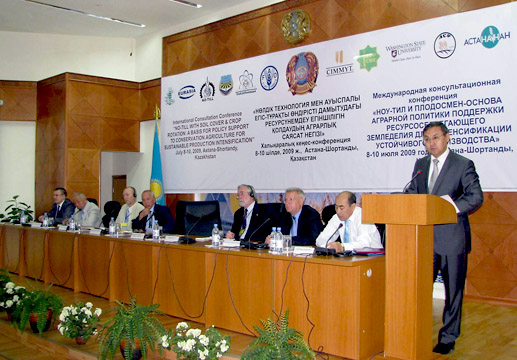 CIMMYT staff in Kazakhstan organized an international conference on conservation agriculture (CA) 08-10 July 2009 in northern Kazakhstan at the Institute for Grain Farming. The conference, “No-till with soil cover and crop rotation: A basis for policy support to conservation agriculture for sustainable production intensification,” was financed by the Food and Agriculture Organization of the United Nations (FAO), CIMMYT, and the International Collaboration for Agricultural Research in Central Asia and the Caucuses (ICAR) project, which is managed by Washington State University. There were 150 participants including scientists from Azerbaijan, Kazakhstan, Kyrgyzstan, Russia, Tajikistan, Turkey, and Uzbekistan along with 70 farmers from Kazakhstan and Russia. Dr. Akylbek Kurishbayev, Kazakhstan’s minister of agriculture and an old friend of CIMMYT, opened the conference and stressed that the government of Kazakhstan is firmly committed to supporting the spread of CA; it already gives a higher subsidy to small farmers who use CA than it does to those who use conventional tillage.
CIMMYT staff in Kazakhstan organized an international conference on conservation agriculture (CA) 08-10 July 2009 in northern Kazakhstan at the Institute for Grain Farming. The conference, “No-till with soil cover and crop rotation: A basis for policy support to conservation agriculture for sustainable production intensification,” was financed by the Food and Agriculture Organization of the United Nations (FAO), CIMMYT, and the International Collaboration for Agricultural Research in Central Asia and the Caucuses (ICAR) project, which is managed by Washington State University. There were 150 participants including scientists from Azerbaijan, Kazakhstan, Kyrgyzstan, Russia, Tajikistan, Turkey, and Uzbekistan along with 70 farmers from Kazakhstan and Russia. Dr. Akylbek Kurishbayev, Kazakhstan’s minister of agriculture and an old friend of CIMMYT, opened the conference and stressed that the government of Kazakhstan is firmly committed to supporting the spread of CA; it already gives a higher subsidy to small farmers who use CA than it does to those who use conventional tillage.
“There was a lot of discussion on the definition of CA, not only because of some confusion with conservation tillage—the common tillage method for wheat in northern Kazakhstan—but also because of the problem of expressing the term in other languages, including Russian,” said Pat Wall, director of CIMMYT’s CA program. The papers presented at the conference, however, showed that CA is gaining in acceptance and application in Central Asia, both in dryland and irrigated situations, he said.
 The conference highlighted the many problems still to be overcome for CA dissemination including the need for reorganization of many of the research and extension systems. Necessary diversification of cropping systems is often hampered by governmental policies and/or undeveloped markets. Weeds continue to be a problem and there is a lack of information on the adaptation of different crop varieties to CA, according to Wall.
The conference highlighted the many problems still to be overcome for CA dissemination including the need for reorganization of many of the research and extension systems. Necessary diversification of cropping systems is often hampered by governmental policies and/or undeveloped markets. Weeds continue to be a problem and there is a lack of information on the adaptation of different crop varieties to CA, according to Wall.
Special thanks to CIMMYT staff in Kazakhstan who worked strenuously to make the conference a success: congratulations to Murat Karabayev, Arman Baitassov, Sagat Ishmuhanbetov, Mekhlis Suleimenov, Larissa Geronina, Zhumagali Ospanbayev, Tansara Murzatayeva, and Zina Telgarayeva.
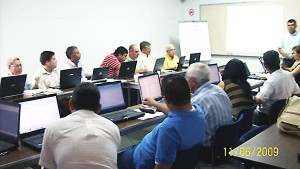 About 20 scientists from
About 20 scientists from 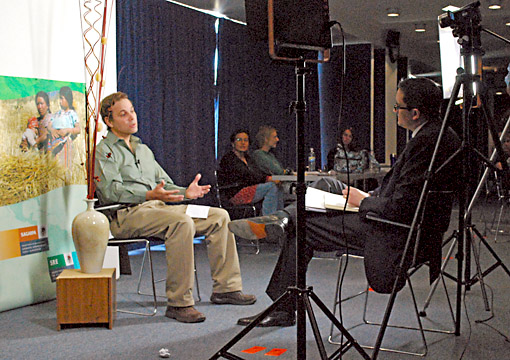 CIMMYT staff at all levels increasingly need to describe and explain center objectives, activities, and accomplishments to a broad public that includes students, scientific colleagues, decision makers, donors, and the media, among others. It may seem simple, but such communication requires considerable knowledge of the center and its global and local contexts, as well as sensitivity about the audience and skill in crafting and presenting messages.
CIMMYT staff at all levels increasingly need to describe and explain center objectives, activities, and accomplishments to a broad public that includes students, scientific colleagues, decision makers, donors, and the media, among others. It may seem simple, but such communication requires considerable knowledge of the center and its global and local contexts, as well as sensitivity about the audience and skill in crafting and presenting messages.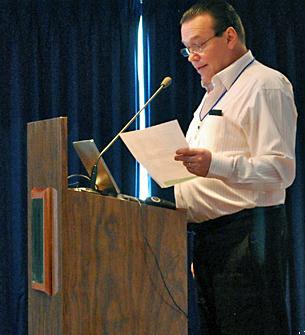 CIMMYT hosted staff of the CGIAR Internal Audit Unit (IAU), as part of a professional development workshop organized by Gerardo Carstens and Yunuhe Reyes. The training began in Mexico City on 23 June 2009, 21 auditors and financial specialists from seven CGIAR centers attended workshop sessions at El Batán during 29 June-02 July. In a welcome address to the group, DG Tom Lumpkin discussed the crucial and evolving role of internal auditing in the business world and the importance of it for centers like CIMMYT: “We count on you to give us the ‘bad’ news when we get off course, to oppose us when we’re wrong,” he said. John Fitzsimon, IAU director, noted that “the workshop provided a rare opportunity for auditors and clients of their services, who are spread all over the globe, to get together in one place to exchange views and undertake training to make their work more relevant and useful to the CGIAR centers.” At the conclusion of the workshop he pronounced the event a great success, conveying to the group a challenge to “get ahead of the curve to spot problems centers may encounter and help them head these off.”
CIMMYT hosted staff of the CGIAR Internal Audit Unit (IAU), as part of a professional development workshop organized by Gerardo Carstens and Yunuhe Reyes. The training began in Mexico City on 23 June 2009, 21 auditors and financial specialists from seven CGIAR centers attended workshop sessions at El Batán during 29 June-02 July. In a welcome address to the group, DG Tom Lumpkin discussed the crucial and evolving role of internal auditing in the business world and the importance of it for centers like CIMMYT: “We count on you to give us the ‘bad’ news when we get off course, to oppose us when we’re wrong,” he said. John Fitzsimon, IAU director, noted that “the workshop provided a rare opportunity for auditors and clients of their services, who are spread all over the globe, to get together in one place to exchange views and undertake training to make their work more relevant and useful to the CGIAR centers.” At the conclusion of the workshop he pronounced the event a great success, conveying to the group a challenge to “get ahead of the curve to spot problems centers may encounter and help them head these off.”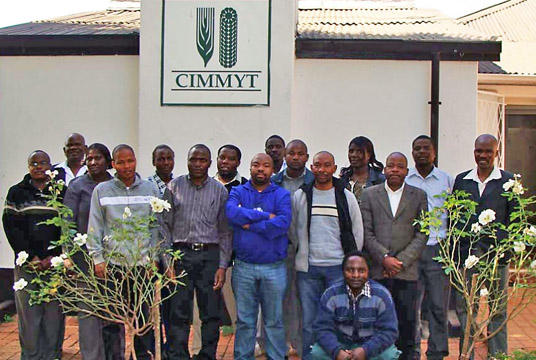 Is it possible for a software to act as a one-stop shop and help manage maize breeding? Indeed it is, and CIMMYT’s Fieldbook provides both.
Is it possible for a software to act as a one-stop shop and help manage maize breeding? Indeed it is, and CIMMYT’s Fieldbook provides both.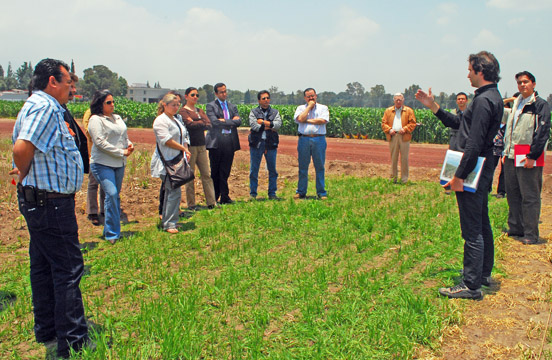 On 24 June 2009, 16 members of the Mixed Consultative Council (Consejo Consultivo Mixto) of Mexico’s Intersecretarial Commission on Biosafety and Genetically Modified Organisms (Comisión Intersecretarial de Bioseguridad y Organismos Genéticamente Modificados, CIBIOGEM) met at El Batán to discuss the country’s emerging policies on the regulation, testing, and use of genetically modified organisms (GMOs), particularly in agriculture. The Council, which includes representatives from diverse sectors of Mexican agriculture, met at El Batán at the request of its current president, Fabrice Salamanca, who is also the executive director of AgroBIO México, a private agency that promotes public awareness about biotechnology and its products. Salamanca wanted Council members to learn about CIMMYT and its work. In addition to their formal sessions, the group interacted with center staff and visited the germplasm bank and the long-term conservation agriculture trial.
On 24 June 2009, 16 members of the Mixed Consultative Council (Consejo Consultivo Mixto) of Mexico’s Intersecretarial Commission on Biosafety and Genetically Modified Organisms (Comisión Intersecretarial de Bioseguridad y Organismos Genéticamente Modificados, CIBIOGEM) met at El Batán to discuss the country’s emerging policies on the regulation, testing, and use of genetically modified organisms (GMOs), particularly in agriculture. The Council, which includes representatives from diverse sectors of Mexican agriculture, met at El Batán at the request of its current president, Fabrice Salamanca, who is also the executive director of AgroBIO México, a private agency that promotes public awareness about biotechnology and its products. Salamanca wanted Council members to learn about CIMMYT and its work. In addition to their formal sessions, the group interacted with center staff and visited the germplasm bank and the long-term conservation agriculture trial.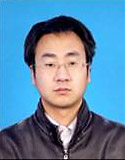 PhD student Xuecai Zhang from CIMMYT-China was recently awarded a 2009 fellowship from the International Fund for Agricultural Research (IFAR). Zhang was given USD 11,000 to work on the integration of marker-assisted recurrent selection (MARS) in conventional maize breeding at CIMMYT.
PhD student Xuecai Zhang from CIMMYT-China was recently awarded a 2009 fellowship from the International Fund for Agricultural Research (IFAR). Zhang was given USD 11,000 to work on the integration of marker-assisted recurrent selection (MARS) in conventional maize breeding at CIMMYT.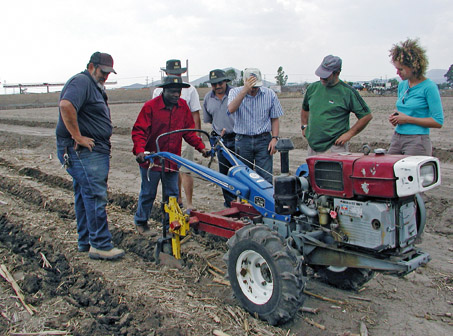 Petr Kosina, head of Knowledge, Information, and Training; and Roberto La Rovere, impacts specialist; presented a recently published study entitled “Impacts of CIMMYT’s international training linked to long-term trials in conservation agriculture: 1996-2006,” on 9 June 2009, at CIMMYT-El Batán. Jirina Svitáková, PhD student at the Czech University of Life Sciences in Prague was the lead author of the study.
Petr Kosina, head of Knowledge, Information, and Training; and Roberto La Rovere, impacts specialist; presented a recently published study entitled “Impacts of CIMMYT’s international training linked to long-term trials in conservation agriculture: 1996-2006,” on 9 June 2009, at CIMMYT-El Batán. Jirina Svitáková, PhD student at the Czech University of Life Sciences in Prague was the lead author of the study.